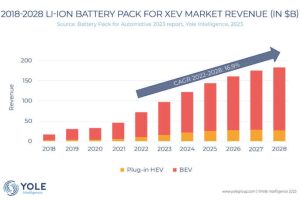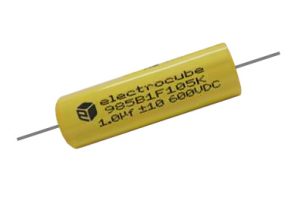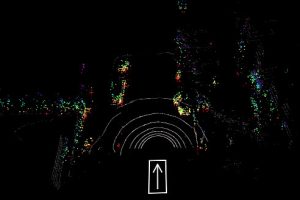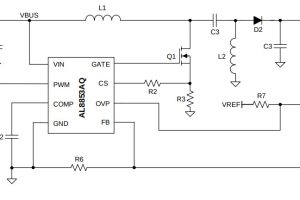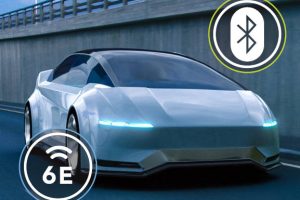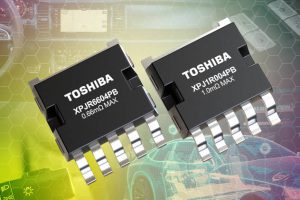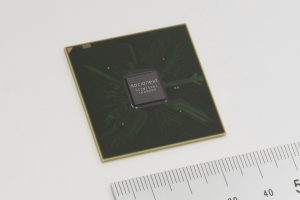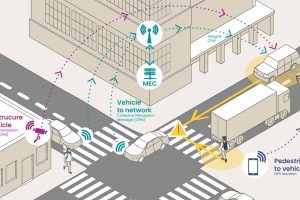Renesas will be using chiplets in its next generation of automotive SoCs, and will add software and tool-compatible automotive microcontrollers. The company revealed this when announcing its 5th generation ‘R-Car’ product range, the first of which will be sampling late next year for cars shipping in 2027. Chiplets are simply die to be used inside multi-die packages. They increase product ...
Automotive Electronics
News articles relevant for automotive content, whether in terms of components, power, communications, infotainment or testing.
EV battery market growing at 16.9% 2022-28
The market for Li-ion battery packs for BEV and PHEV will grow to about $180 billion in 2028, with a 16.9% CAGR 22-28, says Yole Developpement. The battery cell supply chain is primarily led by Asian players: China accounting for 57%, with South Korea at 25% and Japan at 7% following. In the coming years, there will be a growing ...
Film capacitors up to 10μF and 1kV handle surges in high power inverters without degrading
Electrocube has created a series of metallised polypropylene film capacitors for high power inverters in military and commercial, land and sea, applications. Voltage ratings of 400, 600 and 1,000V are available, and capacitances from 100nF to 10μF, plus 15 and 20μ in the 400V range “Able to handle high surge currents without degrading, Electrocube’s 985B is a rugged, non-inductively wound ...
NXP to implement distributed aperture radar for automated driving
NXP has invested in a high-resolution distributed aperture radar software start-up, and will use its software in ICs for vehicle radar. “Distributed aperture radar offers a path to enhance the resolution of radar systems while eliminating the need for thousands of antenna channels,” according to NXP. “It coherently fuses information from multiple radar sensors on a vehicle to create a ...
Automotive SEPIC and boost LED driver
Diodes has is aiming at automotive LED strings with a boost and SEPIC (single-ended primary-inductance converter) controller, that can also be wired as a voltage regulator. Called AL8853AQ, it is qualified to AEC-Q100 and implements current-mode and fixed-frequency (400khz) PWM control. Slope-compensation is included to prevent sub-harmonic oscillation at duty cycles >50%. The IC requires an external n-channel power switching ...
EW: In conversation with Siemens: SSN and next-gen design-for-test technology
We recently had the opportunity to catch up with Lee Harrison, Director of Product Marketing for Siemens EDA, to talk about Streaming Scan Network (SSN) buses and the next-generation of design-for-test technology. In the interview, for example, he discusses the significant changes involved with SSN, de-coupling complexity and dependencies, and delivering test-pattern content in a packetised format. Watch the interview ...
Secured Wi-Fi 6E and Bluetooth 5.3 radio for vehicles
NXP has announced a dual-band concurrent Wi-Fi and Bluetooth radio for automotive use that includes security. Called AW693, it is a dual Wi-Fi 6/6E and and Bluetooth 5.3 device supporting four modes: CDW 2×2 Wi-Fi 6/6E 5GHz + 1×1 Wi-Fi 6 2.4GHz CDW 1×1 Wi-Fi 6/6E 5GHz + 1×1 Wi-Fi 6 2.4GHz 2×2 Wi-Fi 6 2.4GHz 2×2 Wi-Fi 6/6E 5GHz ...
New package delivers 40V 530μΩ automotive mosfet in 59mm2
Toshiba has launched a 200A 40V 0.66mΩmax automotive grade n-channel mosfet that can handle 600A pulses in a 7 x 8.44 x 2.3mm gull-wing package. “Automotive safety-critical applications such as steering, braking and autonomous driving systems generally require more devices than other systems to meet redundancy requirements. Here, a power mosfet with high current density is required due to the ...
Socionext designing 3nm ADAS SoCs
Socionext is developing 3nm SoCs for ADAS and AD (Autonomous Driving) using TSMC’s N3A process for production in 2026. The SoCs will support ISO26262 functional safety product development, AEC-Q100 and IATF-16949 automotive quality and reliability requirements. Socionext is addressing the performance and safety demands of the rapidly evolving automotive electronic systems required by Automotive OEMs. “We are continuing our history ...
Can inter-vehicle communication improve road safety, and help drones cooperate?
French laboratory CEA-Leti looking to find ways to improve road safety through automated vehicle-to-vehicle communication. Its initiative is intended to “contribute to a higher level of vehicle automation and cooperation by expanding the latest developments in vehicular wireless communications that improve reaction time, pedestrian detection and overall vehicle performance”, according to Leti. By “combining learnings from participation in three EU ...
 Electronics Weekly Electronics Design & Components Tech News
Electronics Weekly Electronics Design & Components Tech News

